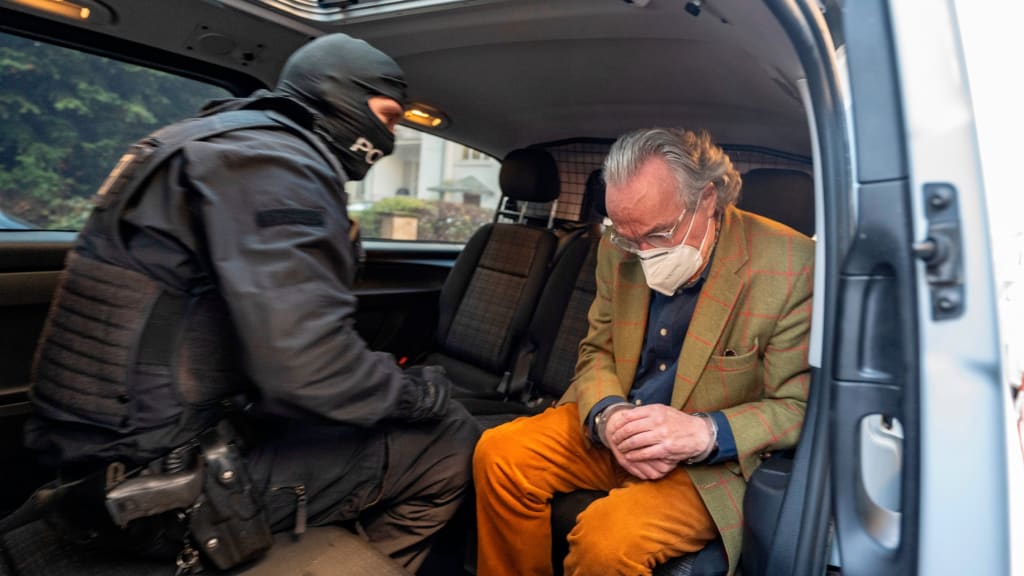"The Complex and Ongoing Hunt for Far-Right Extremists in Germany: Unraveling the Plot to Protect Society"
"Challenges, Lessons, and Future Outlooks in the Fight Against Extremism"

I. Introduction
Germany has experienced a rising threat from far-right extremism in recent years, with a number of violent attacks and plots attributed to extremist groups and individuals. One particularly concerning plot, which authorities are still trying to unravel, involved a group of far-right extremists who planned to launch coordinated attacks on politicians, immigrants, and Muslims.
The far-right plot, which came to light in early 2020, highlights the continuing threat posed by extremist groups in Germany and the need for concerted efforts to prevent and counter such threats. In this article, we will explore the background, details, and implications of the far-right plot, as well as the challenges and lessons learned in the effort to unravel it.
II. Background information
The rise of far-right movements in Germany has been a cause for concern in recent years, fueled in part by anti-immigrant sentiment and disillusionment with mainstream political parties. The Alternative for Germany (AfD), a far-right political party, has gained significant support in recent years, particularly in eastern Germany where unemployment and economic struggles have contributed to a sense of discontent among some segments of the population.
The far-right plot in question involved a group of individuals associated with the neo-Nazi group "Gruppe S" (Group S), which was reportedly formed in the summer of 2019. The group was led by Werner S., a former police officer who had been dismissed from the force for expressing extremist views. Other key members of the group included a former soldier, a blacksmith, and a dental technician.
The group reportedly communicated and planned their activities online, using encrypted messaging apps to avoid detection. According to authorities, their plan involved targeting politicians, immigrants, and Muslims, and they had conducted reconnaissance on potential targets and had amassed an arsenal of weapons and explosives.
III. The plot
The primary goals of the far-right plot were to destabilize the German state and to spark a civil war. The plotters reportedly believed that their actions would trigger a wave of violence that would ultimately lead to the collapse of the German government and the establishment of a far-right state.
To achieve their objectives, the plotters had planned a series of coordinated attacks on politicians, immigrants, and Muslims. They had identified a number of potential targets, including mosques, synagogues, and political offices, and had conducted surveillance on these locations.
The plotters also had access to a significant amount of weaponry, including guns, ammunition, and explosives. They had reportedly acquired these weapons illegally and had stockpiled them in hidden locations.
The impacts of the far-right plot on German society and politics are difficult to quantify, but the potential for widespread violence and instability is a cause for concern. The plot highlights the dangers posed by far-right extremism and the need for authorities to remain vigilant in their efforts to prevent such threats.
IV. Efforts to unravel the plot
The far-right plot was uncovered by German authorities in early 2020, following a months-long investigation. The plotters were arrested and charged with various crimes, including planning a terrorist attack and forming a criminal organization.
In addition to the arrests, German authorities have taken a number of other measures to prevent and counter far-right extremism. These include increasing surveillance of extremist groups and individuals, tightening gun laws, and taking legal action against individuals and organizations that promote extremist ideologies.
Societal response to the far-right plot has been mixed, with some expressing shock and outrage at the plot and others expressing sympathy for the plotters and their extremist views. The incident has highlighted the importance of continued efforts to combat extremist ideologies and to promote social cohesion and tolerance.
V. Challenges faced in unraveling the plot
Unraveling the far-right plot posed a number of challenges for German authorities. One of the main challenges was the complexity of the plot and the connections between the plotters and other far-right groups. The plotters had reportedly communicated and coordinated with other extremist groups in Germany and other countries, making it difficult to identify and apprehend all those involved.
Resistance from far-right groups and sympathizers also posed a challenge for authorities. Some far-right groups and individuals expressed support for the plotters and their objectives, making it more difficult for authorities to gain the trust and cooperation of the broader community.
Legal limitations and obstacles also complicated the investigation and prosecution of the plotters. For example, some of the weapons and explosives used by the plotters were acquired illegally, but the legal framework for tracking and prosecuting illegal arms trafficking is complex and often insufficient.
VI. Lessons learned and future outlook
The far-right plot in Germany has underscored the importance of continued efforts to combat extremist ideologies and to promote social cohesion and tolerance. One lesson learned from the plot is the need for greater cooperation and information-sharing between national and international law enforcement agencies in identifying and countering extremist threats.
Another lesson is the need for a more comprehensive approach to addressing the root causes of far-right extremism, including social and economic factors that contribute to a sense of disillusionment and alienation among some segments of the population.
Looking forward, future strategies and actions to prevent similar plots should include increased investment in community-based programs that promote social cohesion and tolerance, as well as more effective legal and law enforcement measures to prevent the acquisition and use of illegal weapons and explosives.
The implications of the far-right plot in Germany extend beyond the country's borders, highlighting the global threat posed by extremist ideologies and the need for a coordinated international response to prevent and counter such threats.
VII. Conclusion
In conclusion, the far-right plot in Germany represents a concerning example of the continuing threat posed by far-right extremism. The plot highlights the challenges faced by authorities in unraveling such plots and the need for continued vigilance and comprehensive strategies to prevent and counter extremist threats.
Efforts to unravel the plot have yielded important lessons and insights, including the importance of international cooperation, community-based programs, and more effective legal and law enforcement measures. As Germany and other countries continue to confront the threat of far-right extremism, these lessons will be invaluable in preventing and countering future plots and promoting a more peaceful and tolerant society.
About the Creator
Yuvaraj Murugasan
"Discover thought-provoking content on our page. From latest news and mystery,crime,thiriller,death to cutting-edge technology, we offer something for everyone. Join us for a journey of learning and inspiration. Stay tuned!"






Comments
There are no comments for this story
Be the first to respond and start the conversation.